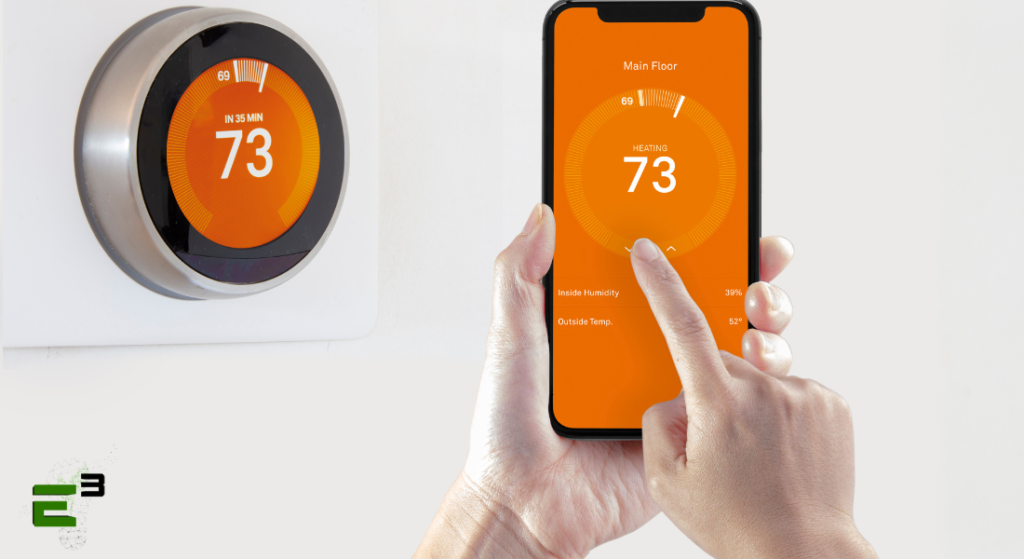Energy Star reports that within a standard household, a central HVAC system has the potential to devour a significant portion, up to 50 percent, of the total energy consumption. Given the substantial impact that HVAC systems have on energy consumption and the corresponding utility costs, homeowners are increasingly seeking innovative solutions to optimize their heating and cooling efficiency. One such solution is the implementation of programmable thermostats, which empower homeowners to exert precise control over their indoor climate settings.
Programmable thermostats offer an array of benefits by allowing homeowners to input specific temperature settings that automatically adjust at various times throughout the day. These devices typically permit users to configure distinct schedules for both weekdays and weekends, fostering a tailored approach to temperature control that aligns with the household’s unique needs and routines. This level of customization serves to significantly enhance the comfort and energy efficiency of the home environment.
In addition to providing more granular control over heating and cooling systems, upgrading to a programmable thermostat can also yield substantial cost savings. By facilitating temperature adjustments based on occupancy patterns and daily activities, these thermostats can help minimize energy waste, which translates into lower utility bills.

1.Energy Savings
When properly utilized, Energy Star indicates that homeowners can achieve annual utility cost savings of around $100 by employing a setback thermostat. Smart thermostats take this a step further, boasting even greater effectiveness, with some manufacturers suggesting potential annual reductions of up to 20 percent in heating and cooling bills. These devices facilitate a one-time setting programming, eliminating the need for manual adjustments, which is notably more dependable than relying on manual changes.
Enhanced Energy Efficiency The automation process enhances energy efficiency while preserving comfort. The thermostat autonomously adapts for maximum energy savings when your home is unoccupied and then reverts to the original temperature setting just before a family member returns. Certain models even feature a vacation mode, particularly useful during prolonged unoccupied periods.
2. Extended Equipment Lifespan and Reduced Maintenance Costs
Heating and cooling equipment typically sees the most use during extreme weather conditions, and the accumulated operating hours can significantly impact maintenance expenses and the durability of your equipment. Stress and wear on crucial components can diminish energy efficiency, leading to expensive repairs and premature system failures. Installing a setback thermostat reduces the thermal load when your home is empty, resulting in less frequent equipment cycling. Ultimately, this can reduce the risk of unexpected breakdowns during severe weather and prolong the operational life of your equipment.
3. Environmentally Responsible
Substituting an analog thermostat with a programmable model is a highly eco-conscious choice. Numerous analog thermostats contain mercury, a hazardous substance that necessitates responsible disposal. Digital thermostats, on the other hand, are free from harmful components, and the reduction in energy consumption reduces the need for local utilities to burn fossil fuels. Lower power consumption equates to fewer greenhouse gas emissions and a diminished carbon footprint.
4. Home Automation Hubs
As thermostats continue to evolve, modern smart programmable models come equipped with capabilities to oversee humidity, indoor air quality, ventilation, and temperature in up to eight distinct zones, enhancing energy savings and energy efficiency. Some advanced models even serve as a central hub for a home automation system, offering control over various devices such as lighting, pool equipment, security systems, stereos, and other compatible devices. With a wifi connection, you can utilize smartphone apps to access your system and modify settings from virtually any location across the country, ensuring maximum convenience.
5. Optimized Comfort
Rather than maintaining a uniform temperature throughout every room, programmable features allow you to customize the settings to align with your individual comfort preferences. For instance, during winter nights when you are snug in bed, the thermostat can lower the temperature, only to gradually raise it just before you wake up in the morning, ensuring your comfort as you make your way to the kitchen for your morning coffee. Additionally, with zoning capabilities, each family member can establish their personalized comfort profiles. Unlike older setback thermostats that were challenging to operate and overly intricate, contemporary models come with large displays and user-friendly programming options, offering an easy and efficient way to manage temperature and comfort.
Ready to Maximize Energy Savings at Home?
Discover a world of energy efficiency with our company! We offer a range of effective strategies to help you save both energy and money, ultimately reducing your electricity bills.
Why not start with an Energy Audit? Let our experts assess your home’s energy consumption and provide tailored recommendations to optimize your energy usage. We’ll not only show you how a smart thermostat can make a significant impact but also introduce you to other cost-effective ways to make your home more energy-efficient.
Join us on the path to a more energy-efficient and cost-effective future. Schedule your Energy Audit today and take the first step toward a lower electricity bill and a greener home. Don’t miss out – secure your appointment now!
However, the evolution of thermostat technology doesn’t stop at programmable models. The emergence of smart thermostats represents a groundbreaking development in home climate control. These intelligent devices incorporate adaptive intelligence to not only adhere to pre-set schedules but also to learn about the occupants’ habits and preferences. This learning capability allows them to virtually program themselves, resulting in an even more seamless and energy-efficient climate control experience.
In sum, the utilization of programmable and smart thermostats has become a paramount strategy for homeowners seeking to curb energy consumption and reduce the associated costs. With their ability to optimize HVAC systems, these innovative devices represent a pivotal step towards a more sustainable and economical approach to home climate control. Schedule an energy audit now!



